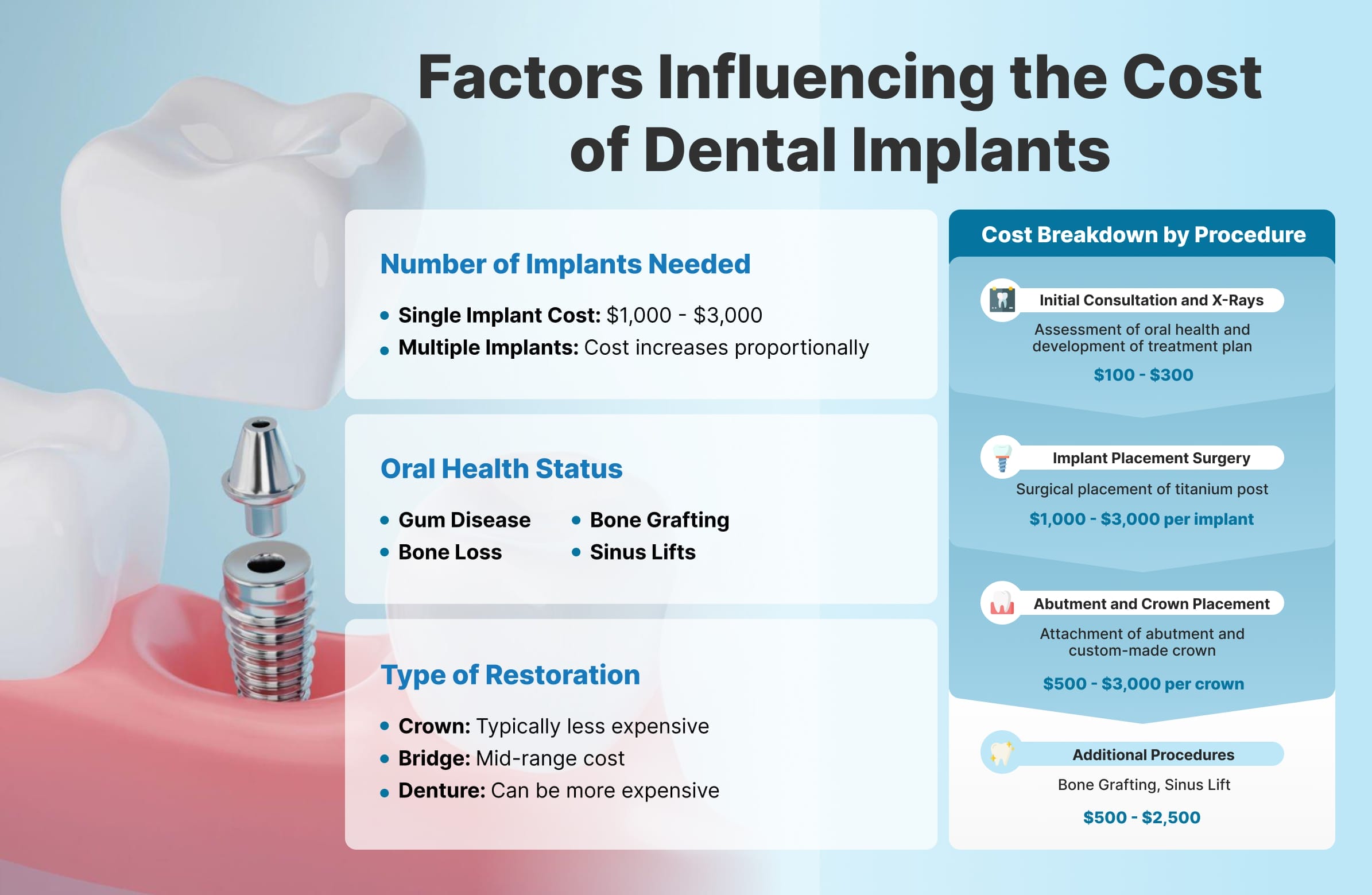The Ultimate Guide To Dental Sense
The Ultimate Guide To Dental Sense
Blog Article
All About Dental Sense
Table of ContentsDental Sense Can Be Fun For EveryoneHow Dental Sense can Save You Time, Stress, and Money.Top Guidelines Of Dental SenseUnknown Facts About Dental Sense
are medical gadgets surgically dental implanted right into the jaw to restore an individual's capacity to eat or their appearance. They give support for artificial (fake) teeth, such as crowns, bridges, or dentures. When a tooth is lost because of injury or condition, a person can experience complications such as quick bone loss, malfunctioning speech, or modifications to eating patterns that result in pain.Dental implant systems consist of an oral implant body and oral implant abutment and may also consist of a joint addiction screw. Professional teeth whitening. The oral implant body is surgically inserted in the jawbone instead of the tooth's origin. The oral implant joint is usually affixed to the dental implant body by the abutment fixation screw and extends with gum tissues into the mouth to support the attached man-made teeth
(https://gravatar.com/futuristiccreativelyc881a796d5)Structure of The Dental Implant System picking dental implants, speak to your dental copyright about the possible benefits and dangers, and whether you are a prospect for the procedure. Things to consider: Your overall health is an important consider establishing whether you are an excellent candidate for dental implants, how much time it will require to heal, and for how long the dental implant might remain in area.
Smoking cigarettes might impact the recovery process and reduce the long-lasting success of the dental implant. The healing procedure for the implant body may take numerous months or longer, throughout which time you generally have a short-lived abutment in location of the tooth. the dental implant procedure: Carefully comply with the oral health guidelines provided to you by your dental provider.
Things about Dental Sense
Implant failing can result in the requirement for another surgery to deal with or change the dental implant system. Brings back the capability to chew Recovers cosmetic appearance Assists keep the jawbone from shrinking due to bone loss Maintains the health of the surrounding bone and gums Helps keep nearby (neighboring) teeth stable Enhances lifestyle Damage to surrounding all-natural teeth throughout dental implant placement Injury to the surrounding cells during surgical procedure, such as sinus opening Injury throughout surgical procedure (for instance, crack of bordering jawbone) Poor function, such as really feeling like the teeth do not attack with each other generally A feeling that the tooth is loose or turning in area arising from an abutment screw loosening up Implant body failing (looseness of the implant body) due to systemic infection, which might be more most likely in individuals with unrestrained diabetes mellitus because of regional infection in bone and periodontals sustaining the dental implant body due to delayed recovery, which may be most likely in people that smoke Difficulty cleaning up the gums around the implant, resulting in poor dental health Untreated periodontal condition Post-surgical pins and needles due to nerve impingement or damages Constantly inform healthcare carriers and imaging service technicians that you have dental implants before any kind of magnetic vibration imaging (MRI) or x-ray procedures.
FDA is not familiar with any negative occasions reported for MRI or x-ray procedures with dental implants. Dental implants systems are typically made of products that comply with international consensus criteria of the International Company for Standardization (ISO) or ASTM International. These requirements have information of what makes a safe material.

An oral implant is a structure that replaces a missing out on tooth. With screw-like tools, the doctor inserts a dental implant into the jawbone, and it acts her latest blog as a support for a man-made tooth, called a crown. A gadget called a joint connects the man-made tooth to the dental implant. The crown is tailor-made to fit the individual's mouth and match the color of their teeth.
Dental Sense - An Overview
Some individuals are not qualified for dental implant surgical treatment. It is for oral specialists to operate people with: intense illnessuncontrollable metabolic diseasebone or soft tissue condition or infectionIf these problems are solved, a person can have the surgical procedure. In, dental specialists avoid from operating on individuals with: If people with any of the above undergo oral implant surgical treatment, there is a greater threat of the implant stopping working.

Dental implant surgical treatment is a customized process. Give you time to recover. Connect the post and final crown, bridge or denture.
Next, your doctor will thoroughly position the oral implant into your jaw. Lastly, your cosmetic surgeon will certainly reposition your gums and close the cut with stitches. If your implant is near the front of your mouth, your dentist will make a momentary tooth for you to use up until you recover. This way, you won't have a void in your smile while you recoup.
The Single Strategy To Use For Dental Sense
Your provider can inform you what to expect in your circumstance. During the recovery stage, your jawbone needs to fuse to the oral implant. This procedure, called osseointegration, is important for stability and long-lasting success. This procedure can take anywhere from three to nine months. In many cases, it may take longer.
As soon as your dental implant heals, your dental practitioner can affix the joint (little connector message) and your last remediation (crown, bridge or denture). This generally takes regarding one hour to complete and may call for a 2nd minor surgical procedure. You shouldn't feel any type of discomfort throughout your dental implant treatment because your service provider will certainly use medication to numb your gum tissues.
Report this page